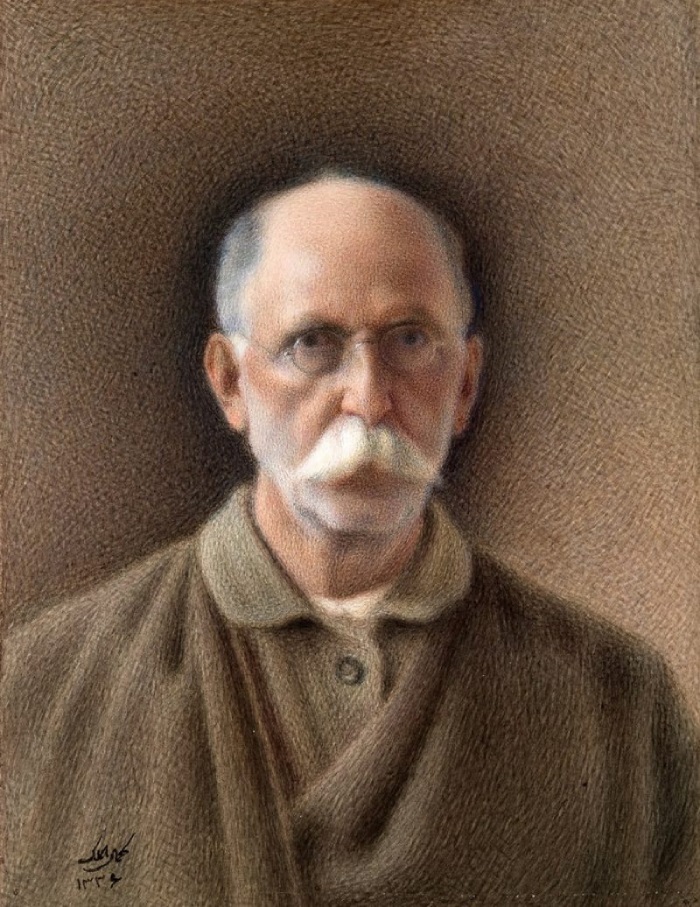Kamal-ud-Din Behzad: The Second Mani or the Raphael of the East
Kamāl al-Din Behzad; The Second Mani or the Raphael of the East
Master Kamāl al-Din Behzad Haravi was most likely born around the year 865 AH (1460 CE) in the city of Herat and passed away in 942 AH (1535 CE) in Tabriz. During his lifetime, Behzad witnessed the eras of three dynasties: the Timurids, the Shaybanids, and the Safavids. He was orphaned as a child, and Amir Ruhollah, a painter originally from Herat known as Mirak, took responsibility for his upbringing. Behzad’s first painting teacher was Agha Mirak Haravi, believed to be a relative of his. “Other teachers of Kamāl al-Din Behzad included Seyyed Ahmad Tabrizi, also known as Master Seyyed Ahmad the painter.”
Behzad learned delicacy and illumination directly from Ruhollah Mirak Khorasani. He acquired fine engraving techniques and a sense of deep expressiveness from Mowlana Valiollah’s designs. “By the age of twenty, he had already been recognized as a talented painter. There is little information about the early periods of this famous Iranian artist’s life, but the well-known historian Khawndmir notes that Kamāl al-Din Behzad, due to his superior artistic qualities and ranks, was continuously favored and supported by Sultan Husayn Bayqara, the king of the Timurid dynasty, and lived in comfort and ease. So much so that the king bestowed upon him the title “Second Mani.”Sultan Husayn Bayqara also appointed Amir Alishir Nava’i, a prominent scholar and poet of the time, as his advisor. Nava’i then created a favorable environment to attract and support artists. It was in such an environment that Kamāl al-Din Behzad was nurtured and displayed many innovations in his works. Behzad lived in Herat for many years until the Timurid fortunes declined and their powerful government was overthrown by Muhammad Khan Shaybani.
Behzad in Tabriz
After Shah Ismail Safavid captured Herat in 916 AH (1510 CE), he brought Behzad with him to Tabriz. Shah Ismail, during his short reign, was heavily engaged in wars and campaigns to establish a centralized government throughout Iran. Therefore, he had little opportunity to support art and artists. Although Shah Ismail’s tastes were more inclined toward hunting and sports like polo, he still showed considerable attention to Behzad. In 920 AH (1514 CE), during the Ottoman-Turkish invasion and the war between the two countries’ forces, Shah Ismail was so concerned for the safety and health of the artists in his court that he ordered Behzad and Shah Mohammad Nishapuri, the calligrapher, to be hidden in a cave. After the conflict, he gave thanks for their survival and protection from its dangers. Following the Battle of Chaldoran, Master Behzad established a new school in Tabriz.
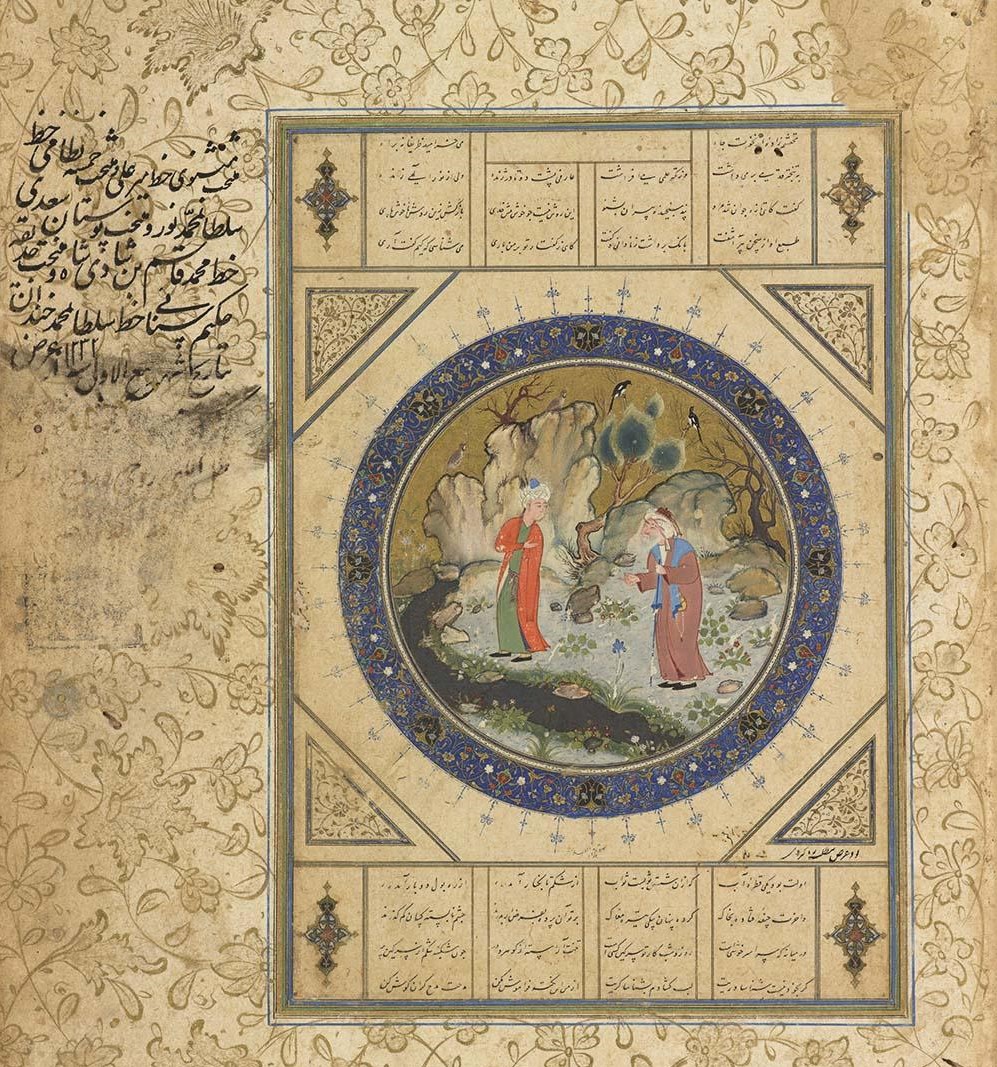
Old Man and Young Man” by Kamāl al-Din Behzad
By the order of Shah Ismail Safavid in 928 AH, Behzad was appointed to oversee the royal library and the guild of calligraphic arts. In this role, he became the head of all library staff, calligraphers, religious scholars, painters, and other artists working there. This appointment was highly significant: first, because it improved the organization and management of the royal library; and second, because it reflected Shah Ismail’s high satisfaction with Behzad, restoring the honor and status that the artist had previously enjoyed in Herat.
Characteristics of Behzad’s Painting
Behzad abolished the previously dominant schools of Tabriz and Baghdad, establishing a new style in Persian miniature painting. He is among the rare artists of his time who incorporated ordinary people—servants, passersby, the poor—into his compositions. In Behzad’s art, the human figure plays the central role, and the creative development of his work stems primarily from his unique approach to depicting humans. He sought new techniques to depict human emotions, emphasizing contours, gestures, and realistic body proportions.. In Behzad’s paintings, nature is not merely a background; it serves as the environment in which the story’s heroes exist. Figures in his works maintain organic relationships with each other, each possessing distinct characteristics, with their positions within the composition carefully pre-determined. Even in tightly packed miniature scenes, sufficient space is left for buildings, gardens, springs, and mountains. Maintaining proportion among these elements relies on geometric methods, which Behzad applied both to the overall composition and the placement of figures. His paintings are notable for their strong, precise compositions, logical and organized depiction of architecture, and the inclusion of diverse characters that demonstrate social interaction. Through these techniques, Behzad successfully introduced movement and dynamism into Persian miniature painting. His works are well-composed and structured, often featuring a figure who serves as an observer or overseer. reflecting Behzad’s belief in oversight of actions. For example, in his illustrations of the Zafarnameh, Timur is depicted supervising his soldiers. Behzad’s works consistently emphasize piety, ethics, and humanity. He showed particular attention to Qur’anic verses, contemplating their meaning and integrating them into his art. An example is his depiction of the verse “Do they not observe the camels, how they are created?” In miniatures such as The Battle of the Camel Riders and The Camel and Its Owner, he demonstrates his faith and devotion.
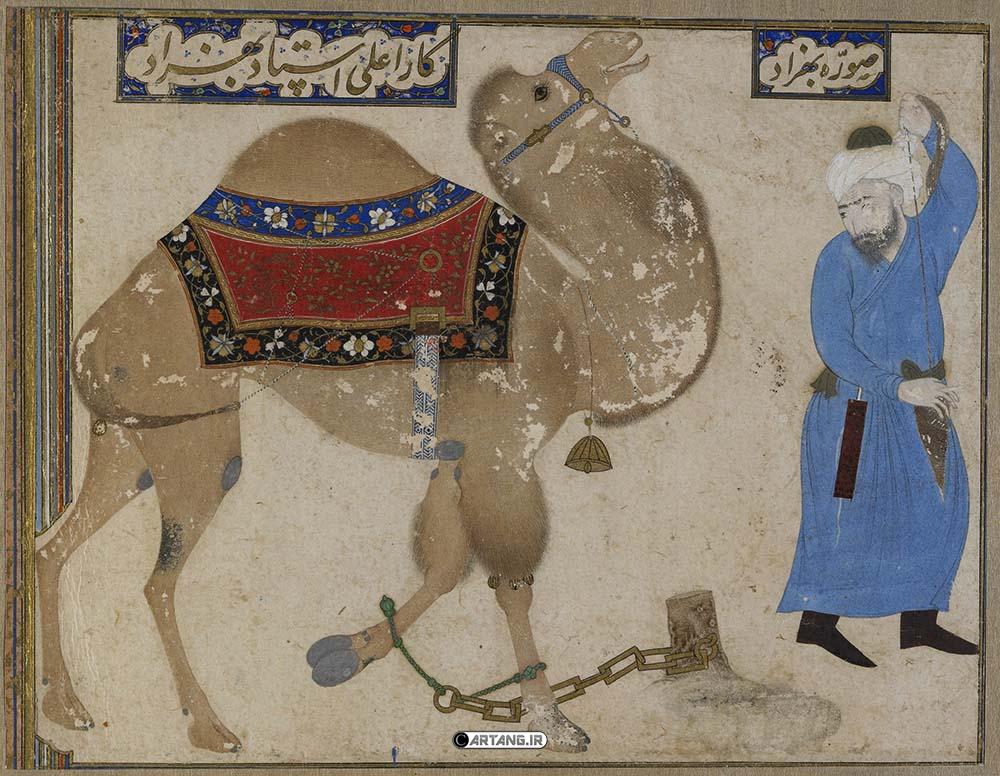
The Camel and Its Owner by Kamāl al-Din Behzad
Kamāl al-Din Behzad paid special attention to ordinary people in society and did not confine his focus solely to the court. In his miniatures, alongside royal figures, one frequently observes commoners, laborers, and the poor actively participating in daily activities, reflecting Behzad’s inclusive vision of society. Regarding his teaching and mentorship, Behzad instructed his students with remarkable generosity. Many of the works created by his students—particularly Qāsem‘Ali—are so skillfully executed that it is often difficult to distinguish them from Behzad’s own creations. Behzad’s compositions generally emphasize groups over individuals. He frequently depicted crowds and communal scenes, rather than focusing on single-figure portraits, which earned him the epithet “the Raphael of the East.” His work consistently embodies ethical values and moral principles, with artistic richness intertwined with humanistic and ethical messages. Some notable examples include: “Yūsuf and Zoleykhā” – exemplifying virtue and moral rectitude, “Discussion of Theologians in the Mosque” – illustrating resolution and understanding, “Shah Dara and the Shepherd” – showing attentiveness to the lower classes, “Construction of the Palace of Khurnaq” – highlighting the perils of greed and worldly desire. A survey of Behzad’s masterpieces demonstrates that his art consistently aligns with ethical, cultural, and religious values, making him not only a technical master but also a moral and human-centered artist.
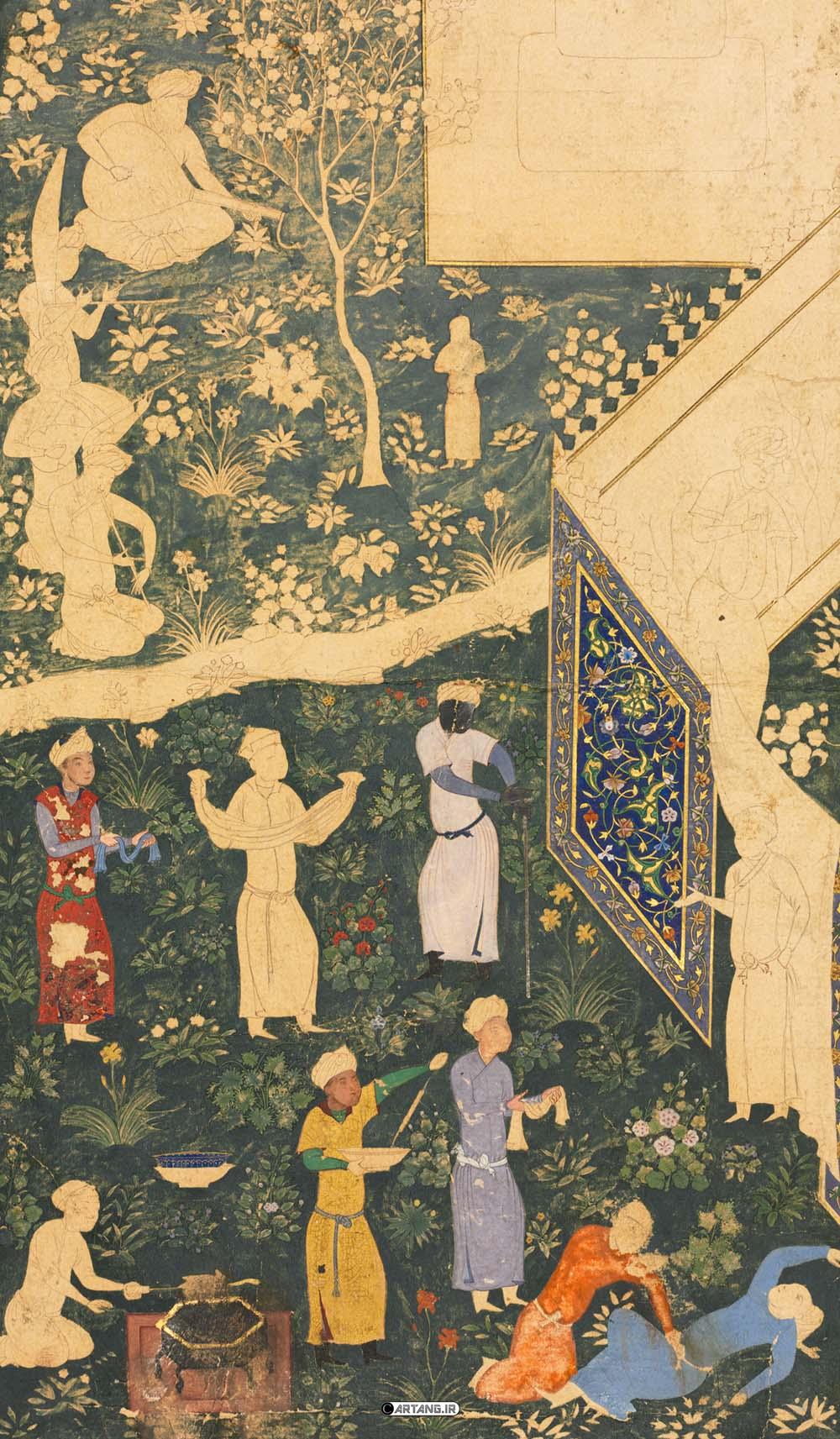
“Sultan Ḥossein Mirza in the Garden” by Kamāl al-Din Behzad
On the other hand, in analyzing Behzad’s works, it should be noted that color and form in his paintings are inseparable. Flat areas of color are arranged side by side in harmony with the meaning being expressed. He possessed a deep understanding of the mutual influence of complementary colors and the expressive nature of color itself. Behzad’s realistic interpretation of narrative events and his attention to the visual aspects of everyday life represent another facet of his artistic innovation. However, he never compromised the spiritual essence of a story merely to depict ordinary scenes. To represent the real world, he employed a method grounded in the aesthetic principles of Persian miniature painting, making his realism fundamentally different from European naturalism. Realists like Behzad expressed reality through symbols and conceptual representation rather than direct imitation. This form of realism could be described as “spiritual realism”—an Eastern perception infused with Islamic mysticism (Sufism), reflecting a deeply mystical understanding of reality while emphasizing the inherent, inner details of phenomena.
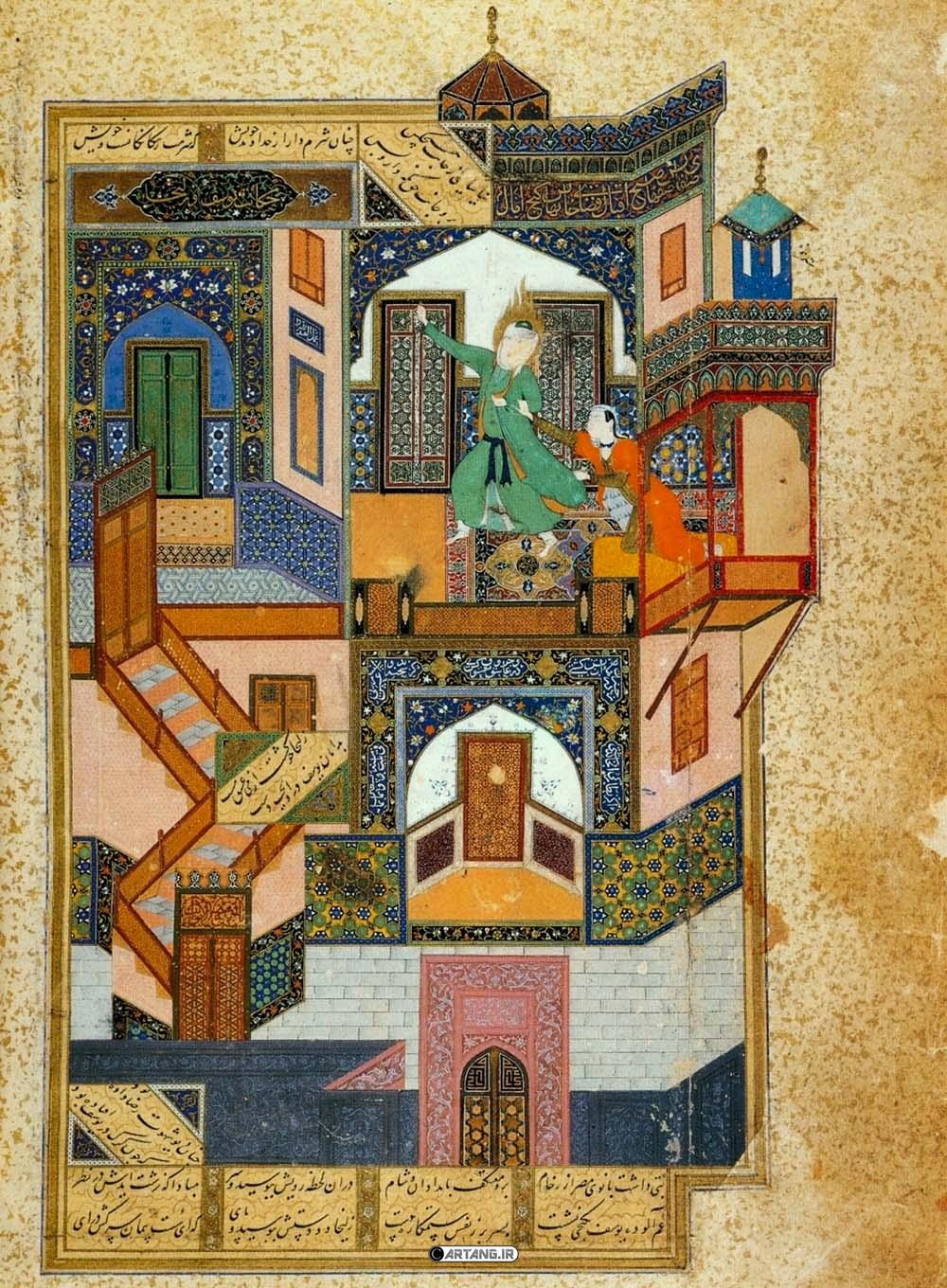
“Yusuf and Zuleikha” by Kamāl al-Din Behzad
The most important works of Kamāl al-Din Behzad.
Despite Kamāl al-Din Behzad’s long life and the support he received from the Timurid and Safavid courts, It would have been expected that many works by this master would have survived. However, this was not the case, and only a few works remain, which most scholars agree can be attributed to Behzad. The best examples of Behzad’s work, whose authenticity is beyond doubt, are found in two manuscripts: one is the Khamsa of Nizami (864 AH), held at the British Museum, and the other is a copy of Saadi’s Bustan (898 AH), preserved in the Cairo Library. From the Khamsa manuscript in the British Museum, the painting known as “Construction of the Khurnaq Palace” stands out as one of Behzad’s masterpieces. This painting depicts a scene of everyday work, full of motion and activity. Notably, Behzad portrays a group of workers engaged in building the palace in various postures: At the bottom of the painting, three workers carrying loads are depicted moving forward, while in the middle, two individuals with baskets on their shoulders move rapidly in the opposite direction. The sense of speed is immediately perceptible at first glance. Moreover, Behzad successfully conveys the rapid movement through the use of contrasting colors and the interplay of warm and cool tones, enhancing the sense of dynamism in the scene.
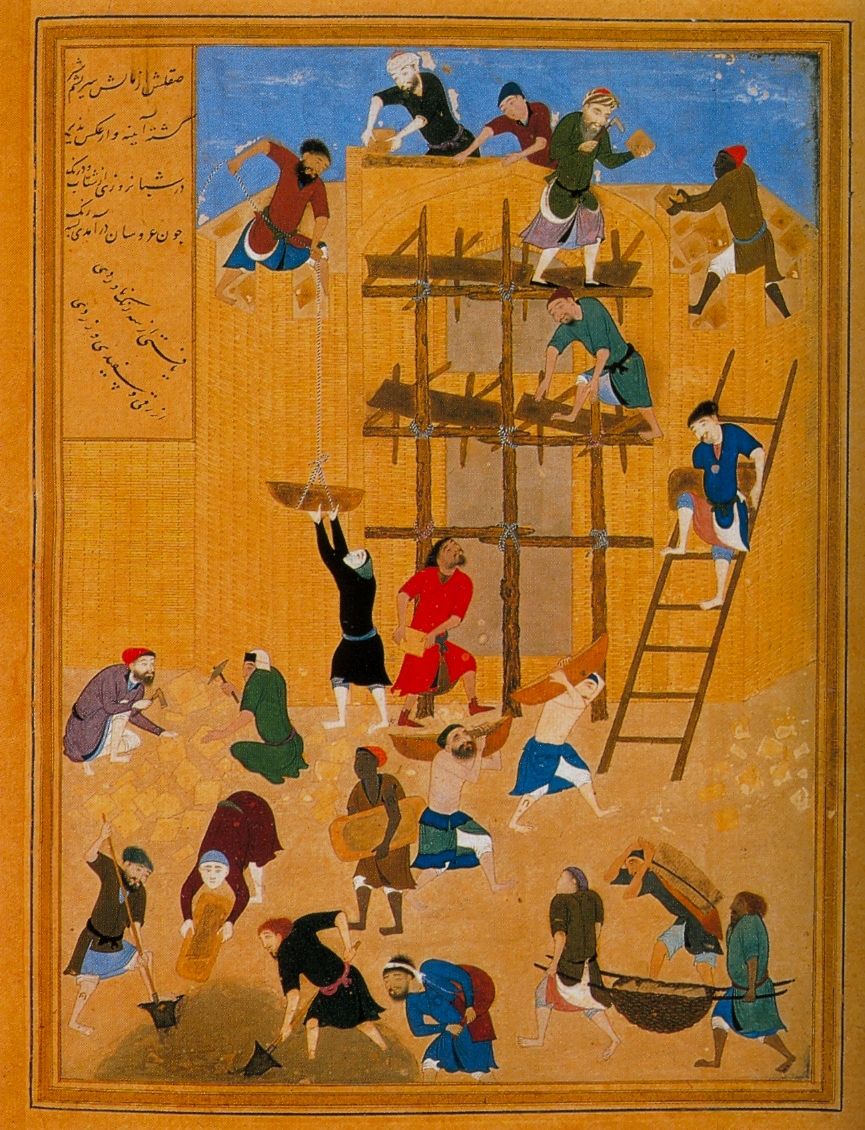
The painting “Construction of the Palace of Khurnaq” by Kamāl al-Din Behzad.
Another painting from the same collection, titled “Caliph Ma’mun Visiting the Bath”, is also considered one of Behzad’s masterpieces. In this painting, a lively everyday scene unfolds before the viewer: a worker hangs towels on the roof of the bath, another wrings out a wet towel, and in the upper left corner, a bath attendant washes someone’s head—all while Caliph Ma’mun of the Abbasid dynasty observes the scene.
From the second collection, Bustan of Saadi, a very famous painting is “The Jurists Debating in the Mosque”.
In this work, Behzad depicts a mosque with a beautiful façade, filled with clerics engaged in debate, while a poor man holding a bowl enters the mosque. Another notable painting from this collection is “The Shepherd and Dara”, which Behzad executed with exceptional skill and mastery.
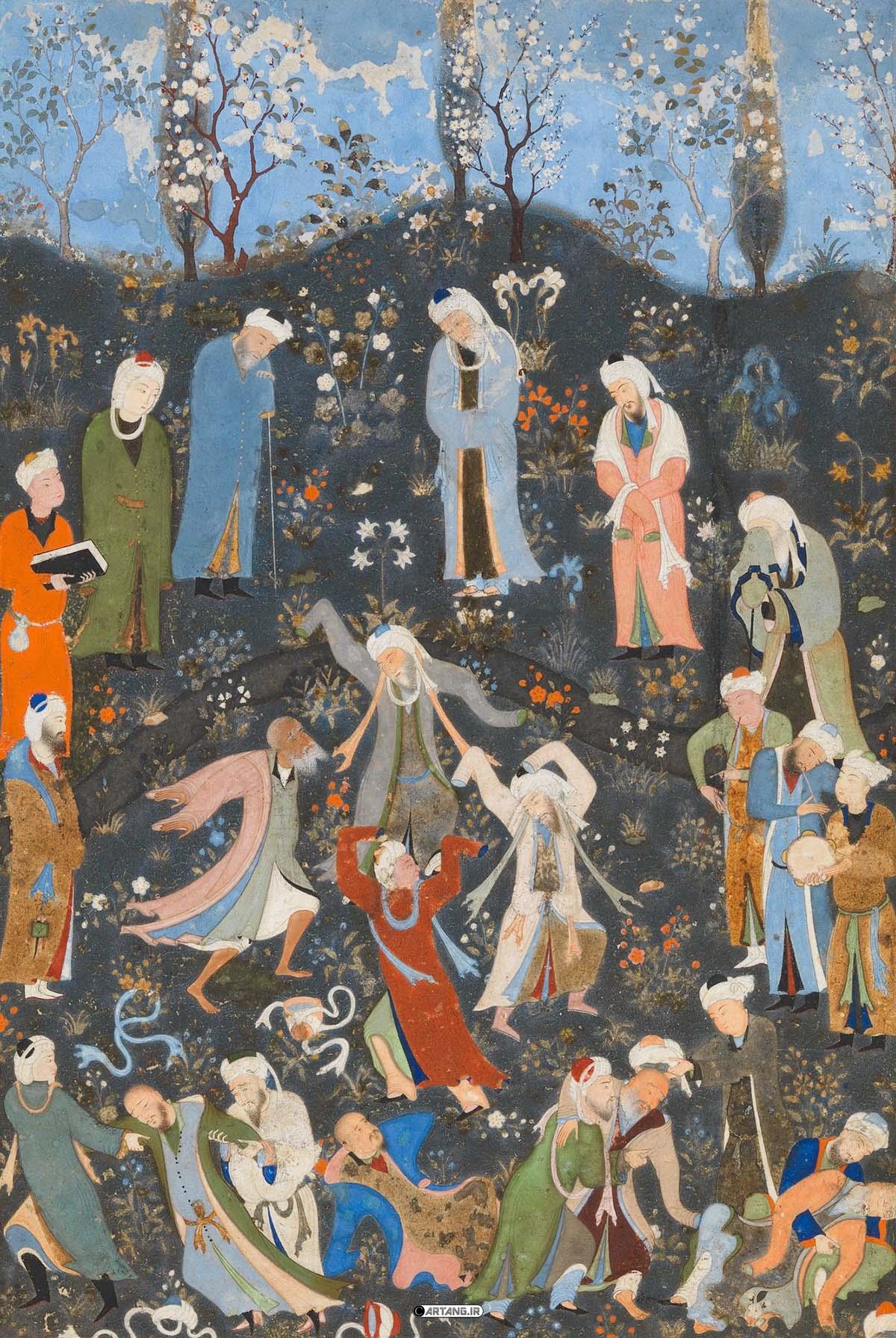
“Sama of the Sufis” by Kamāl al-Din Behzad
Although Kamāl al-Din Behzad was trained in the Herat school of painting, his extraordinary skill in composition, color harmony, and balance of forms brought about a significant transformation in the tradition of Iranian painting. Through strong and dynamic contour lines, he breathed life into the previously static and uniform figures, turning nature and architecture into active settings for human action and assigning a proper place for each figure within this environment. Behzad, by utilizing the interplay of colors, linked different parts of the image and, to strengthen the structural coherence of his work, applied geometric principles in his compositions. This allowed him to establish a logical and cohesive relationship between humans, objects, and their surroundings, a truly novel achievement in Iranian painting.
Furthermore, Behzad worked to diminish the influence of Chinese painting on Iranian art, bringing human depictions closer to Iranian physiognomy. Few painters in the history of Iran exhibited such ingenuity and innovation, influencing Iranian miniature painting for nearly eighty years. As a result, the Herat school reached its peak, and Behzad’s works and ideas became widely admired, forming a cultural and artistic model for future generations of painters.
In conclusion, Kamāl al-Din Behzad is regarded as a leading figure of the Herat school and one of the most distinguished painters in the history of Iranian art. His masterful use of vibrant and varied colors reflects his deep sensitivity to color, while his unique realism—especially in scenes depicting ordinary people rather than courtly life—sets his work apart from earlier painters.
Some of his most notable works include: The Construction of Khurnaq Palace, Yusuf and Zuleikha, Zari’s Son at the Burial of His Father, Saadi and a Youth from Kashgar, The Camel Riders’ Battle, The Camel and Its Owner, Prophet Muhammad (PBUH) and the Rightly Guided Caliphs, Old Man and Young Man, Sama of the Sufis, Sultan Husayn Mirza in the Garden, and others.
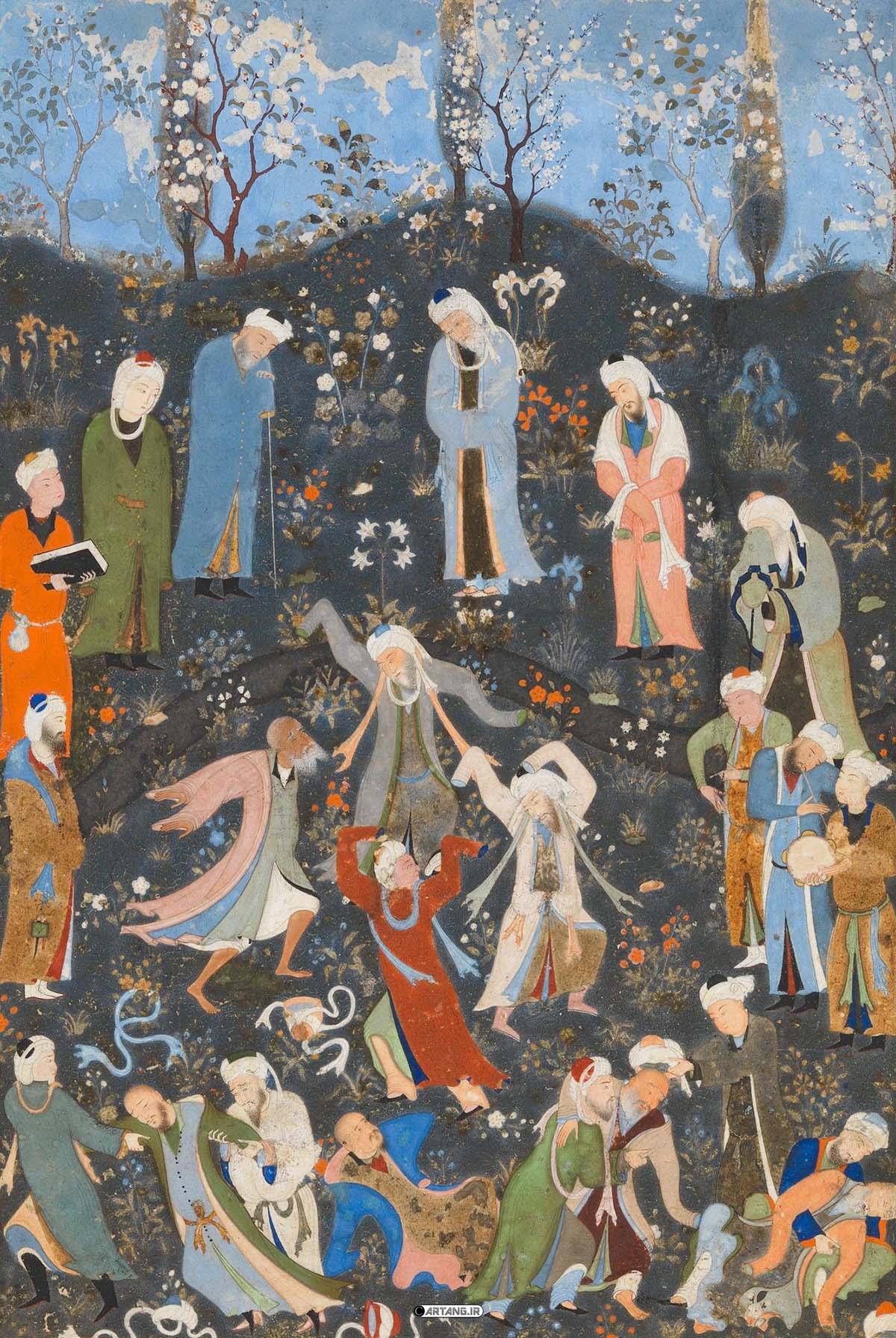






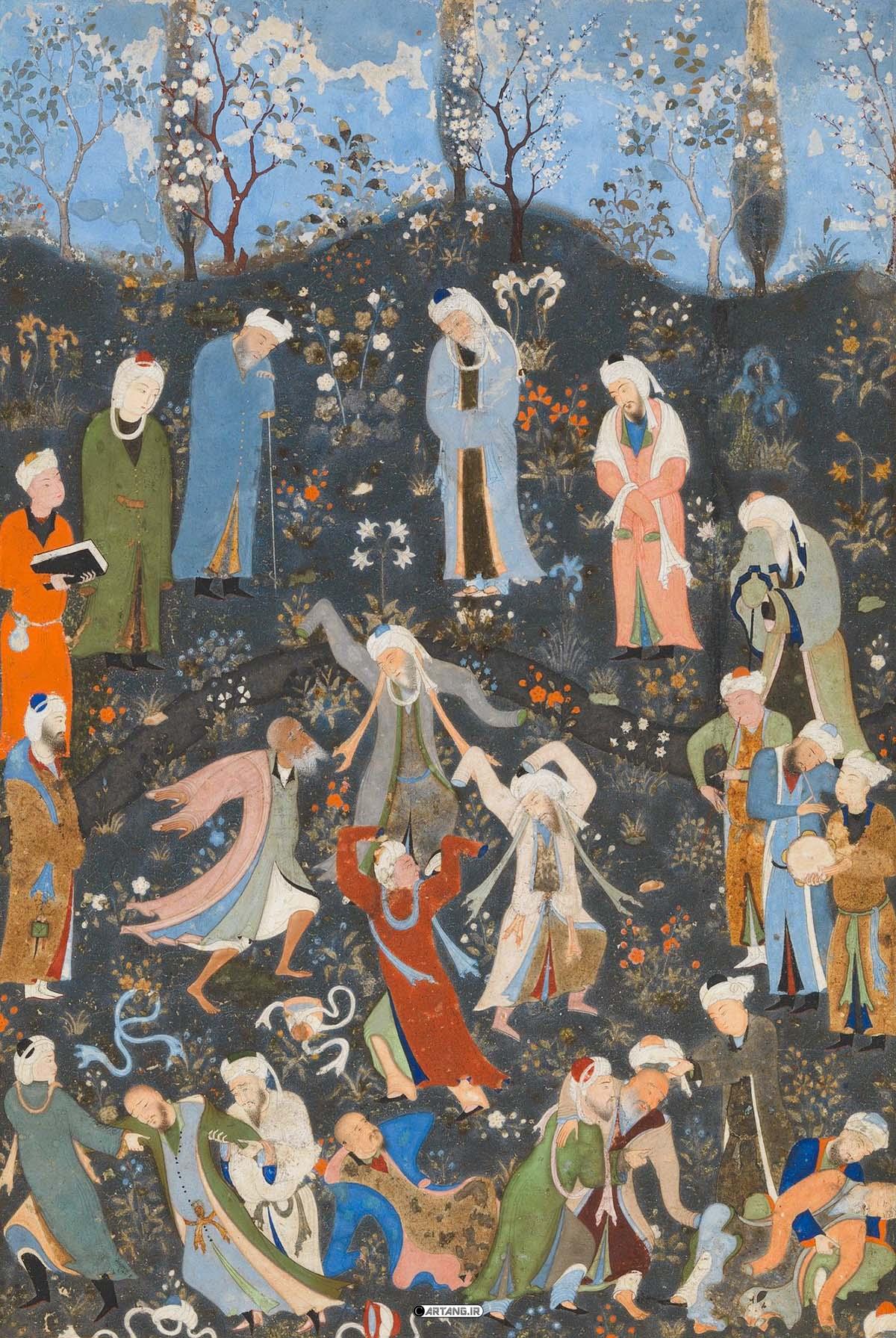
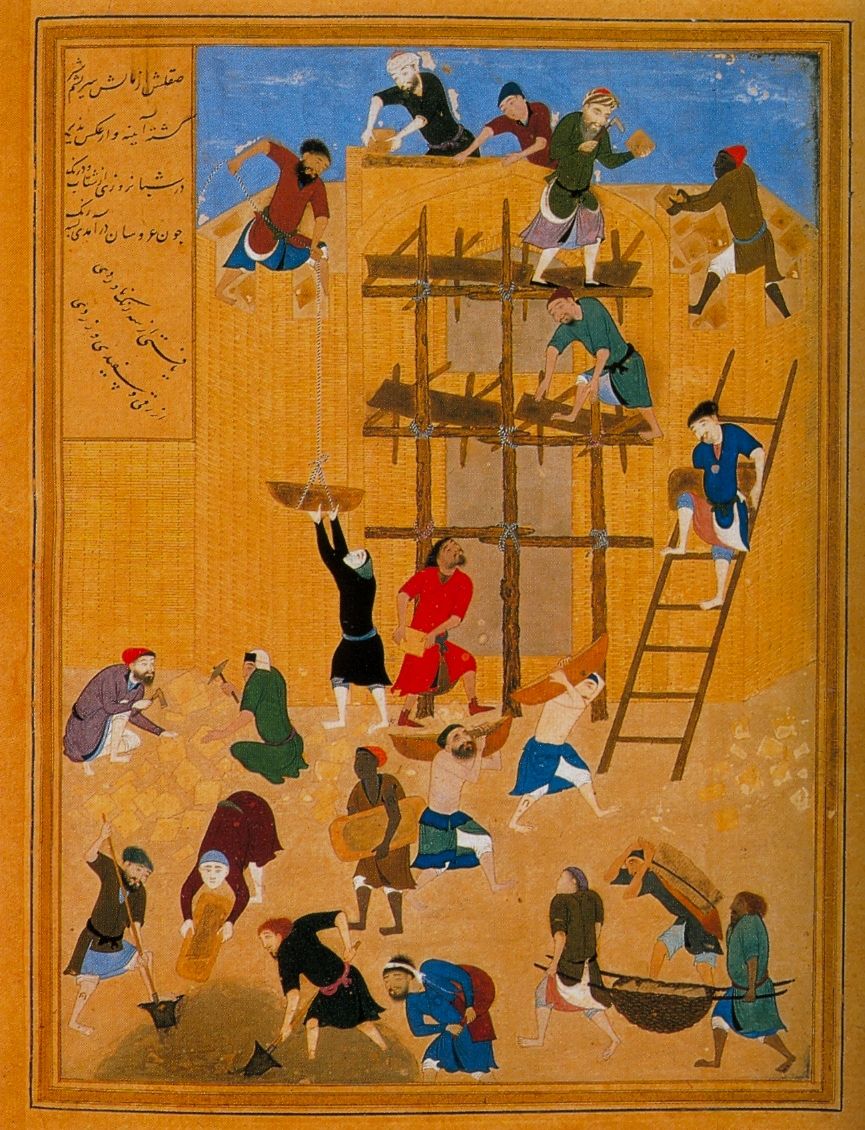
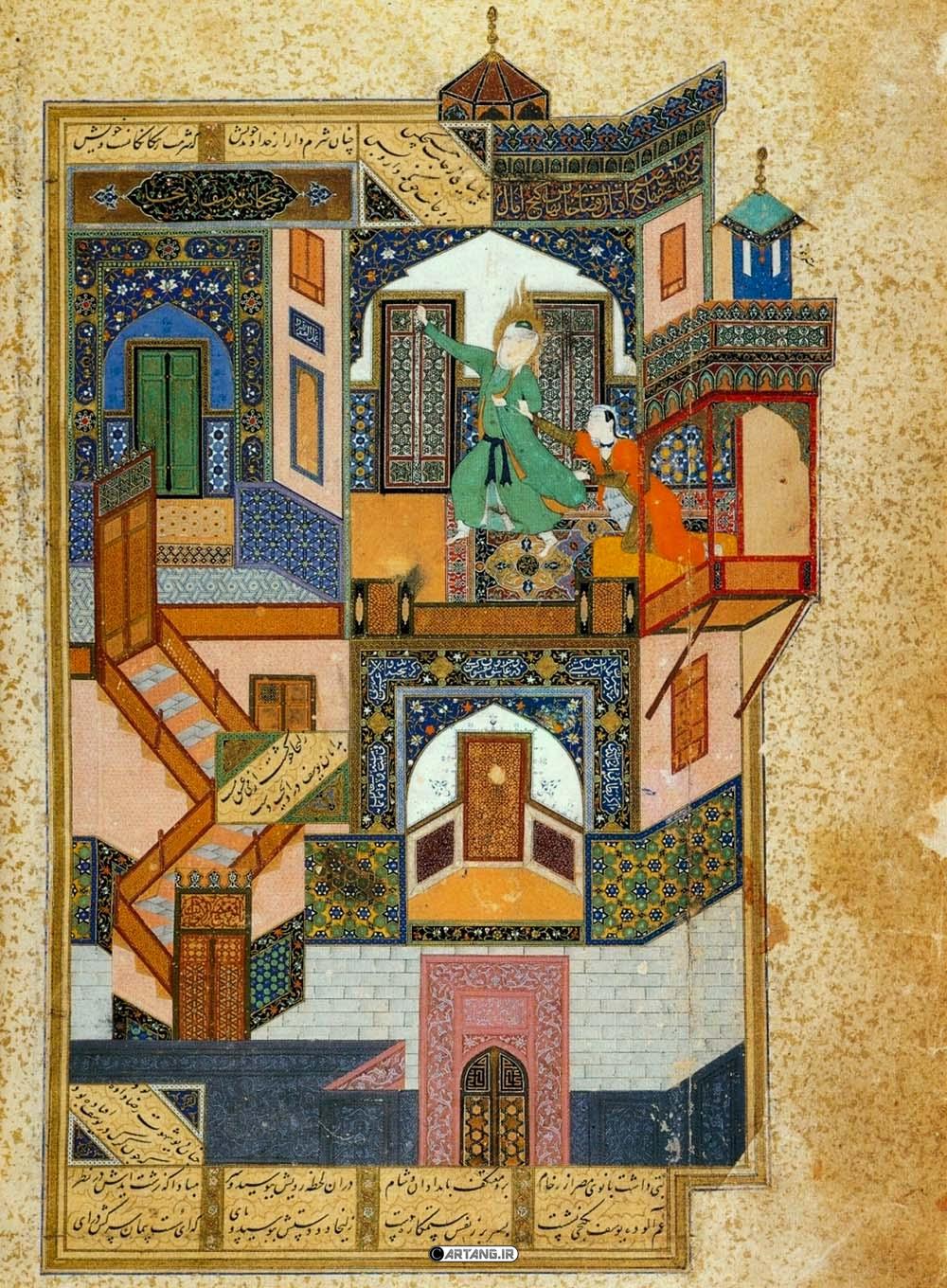
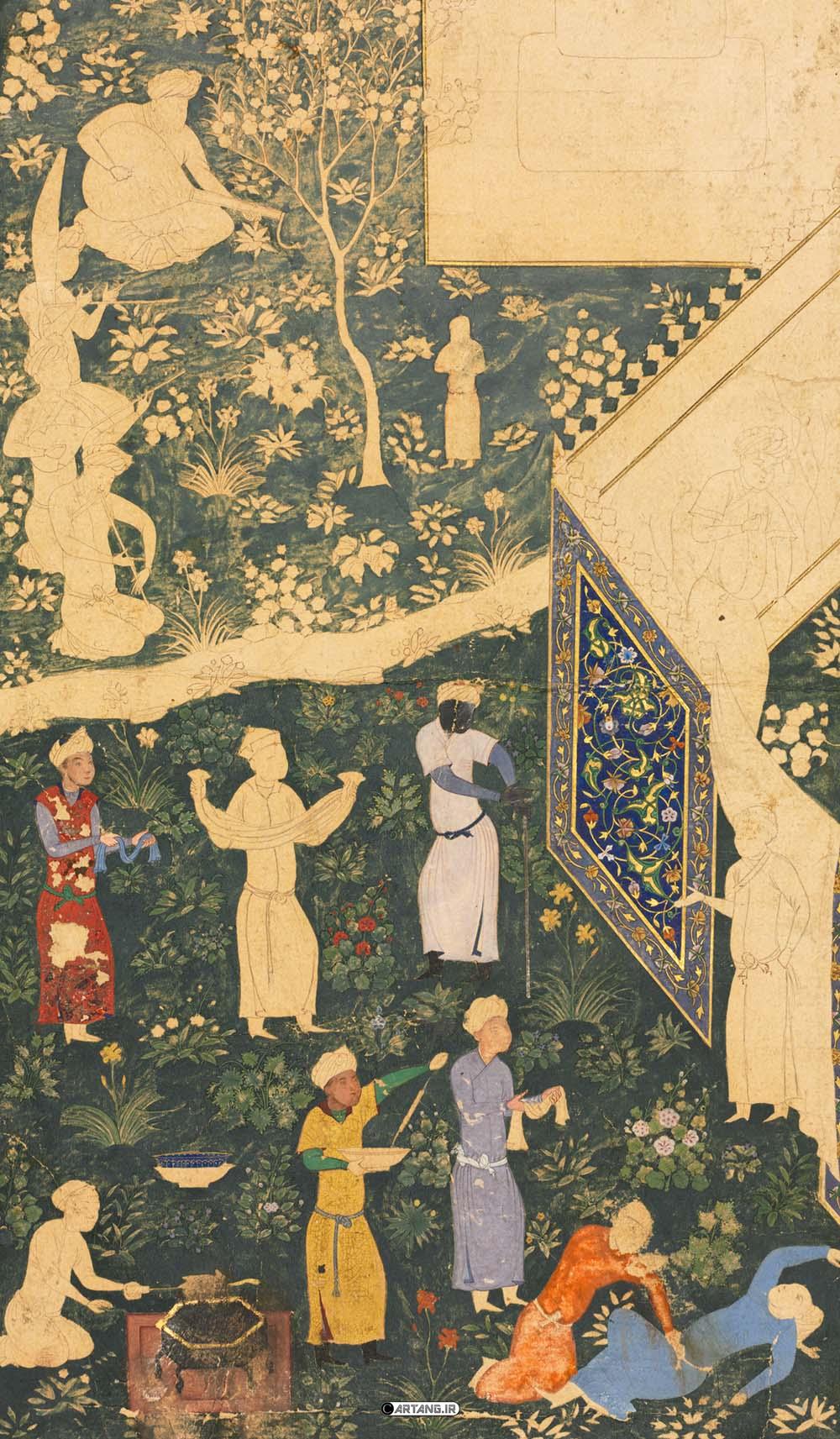
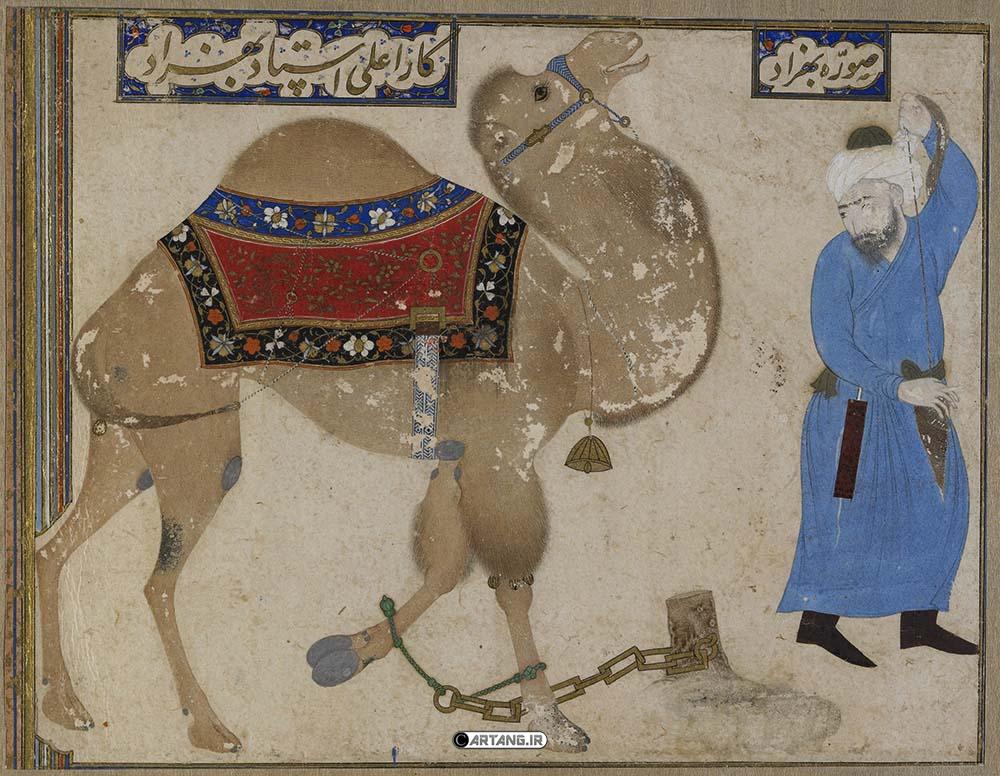
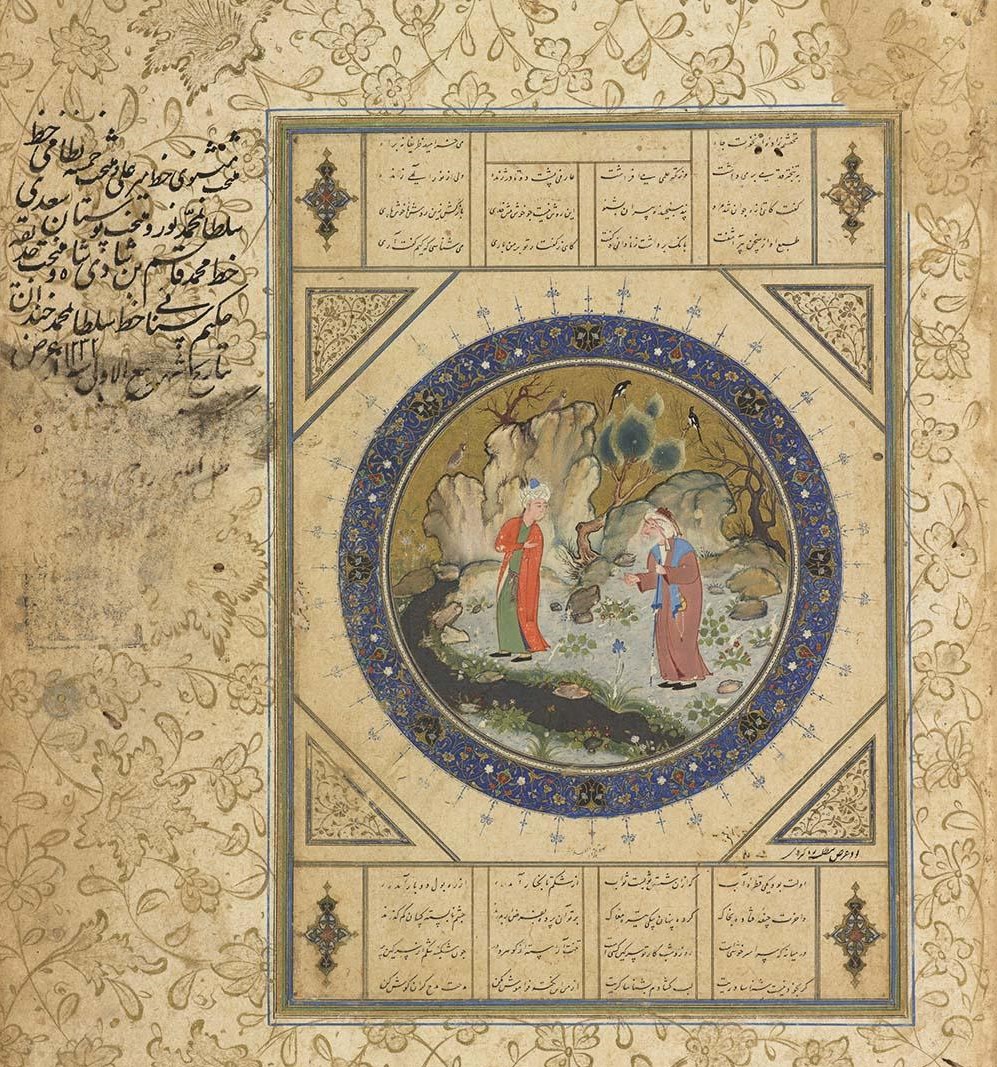






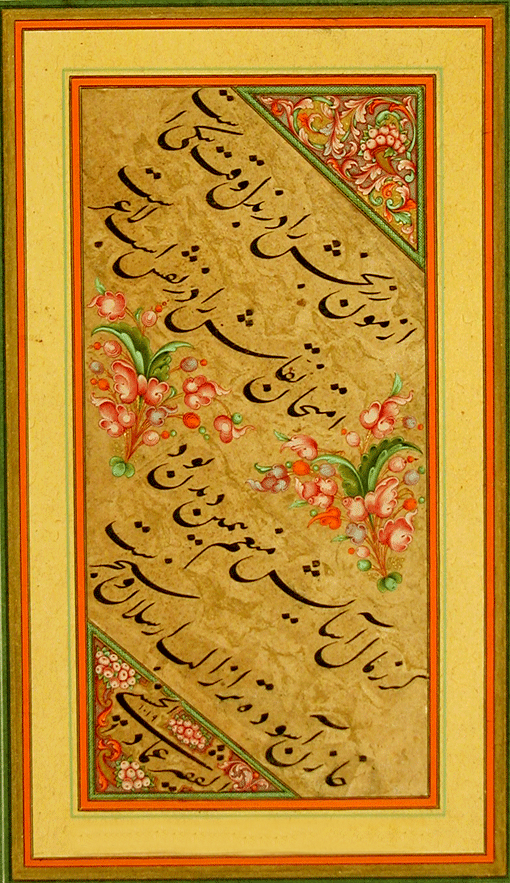
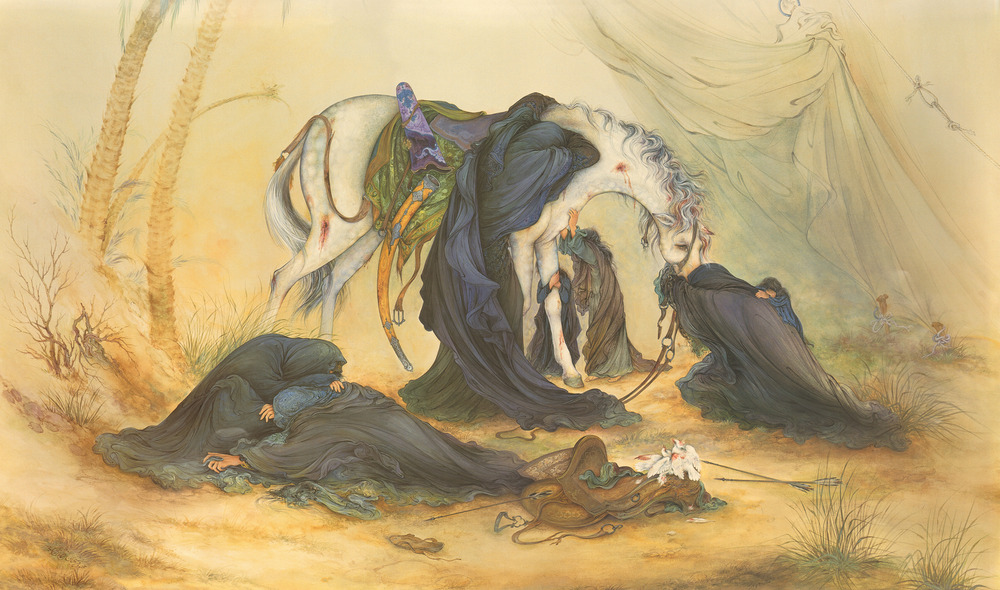
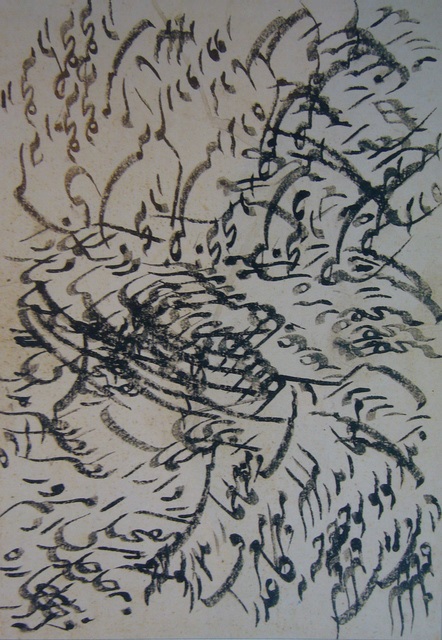
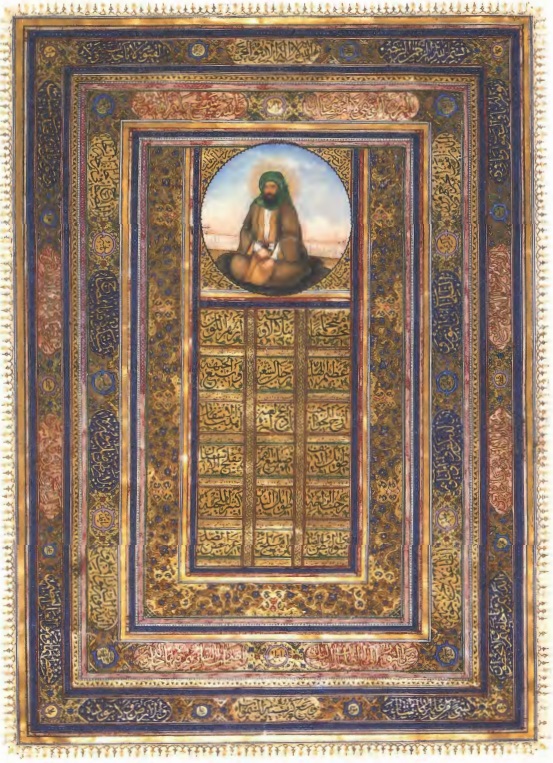
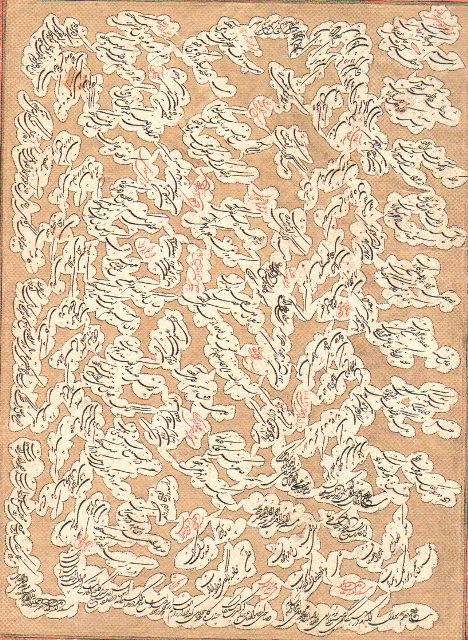
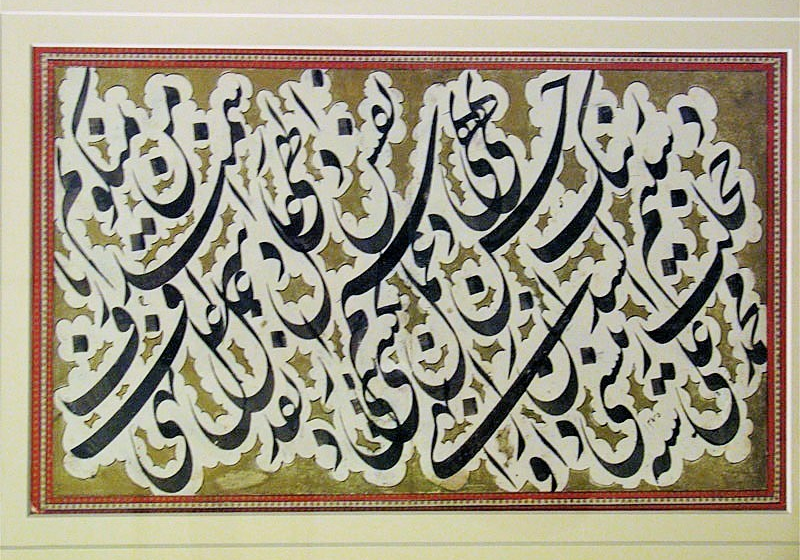
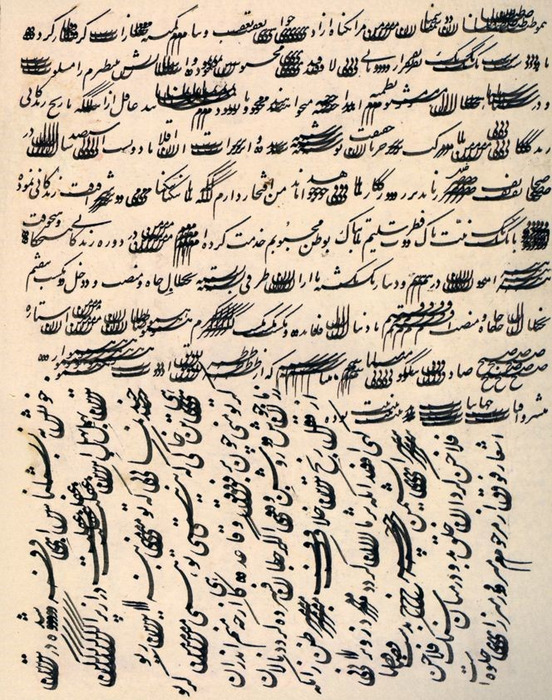
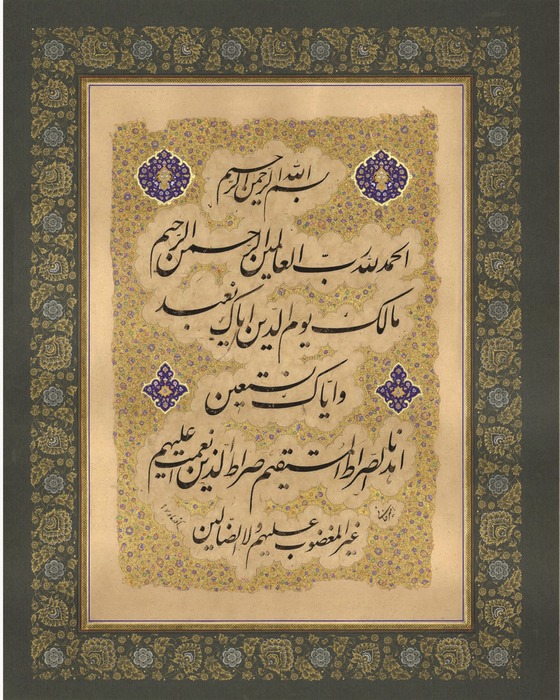

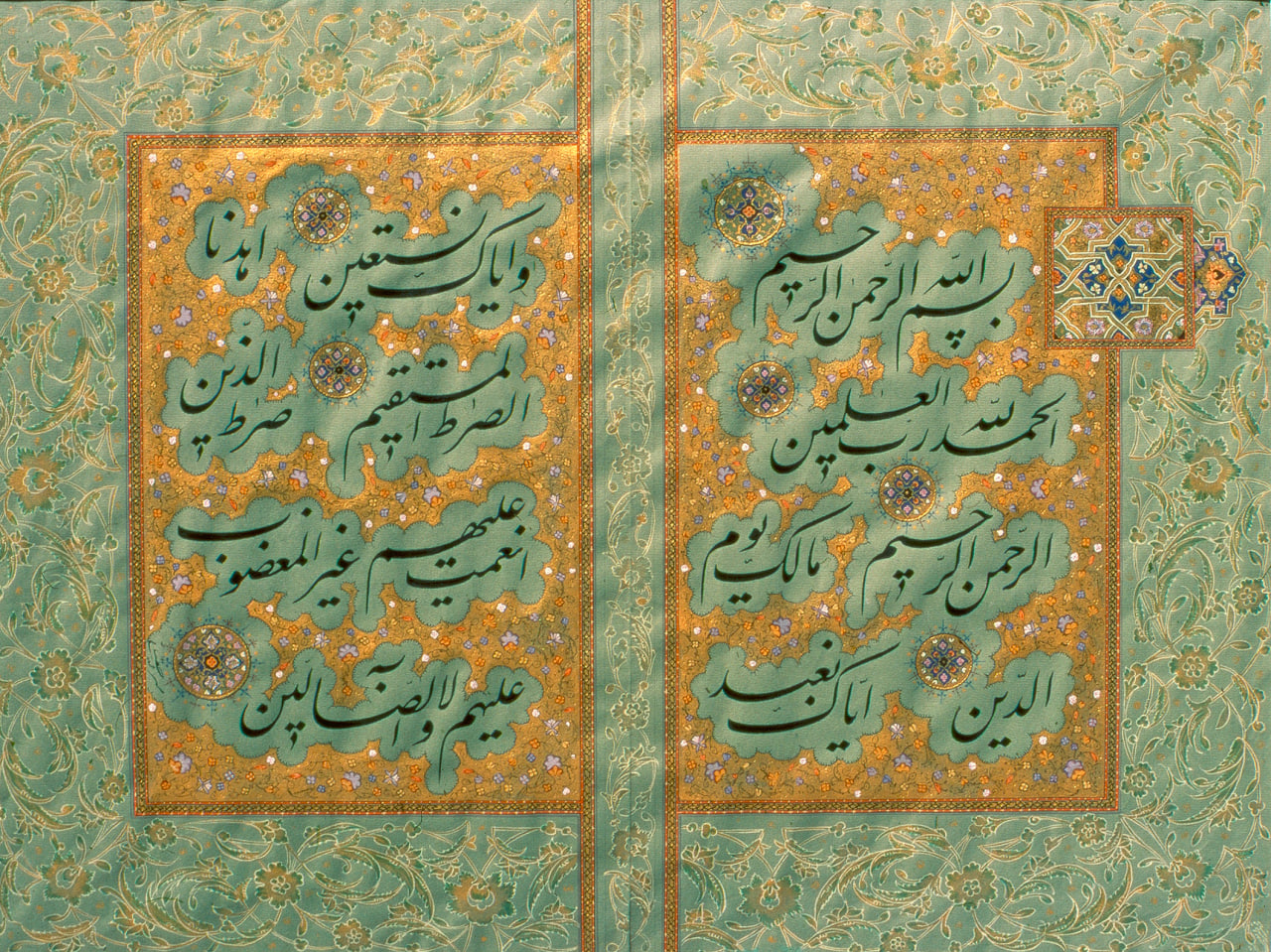
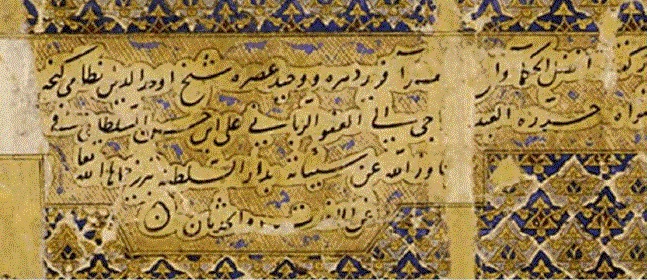
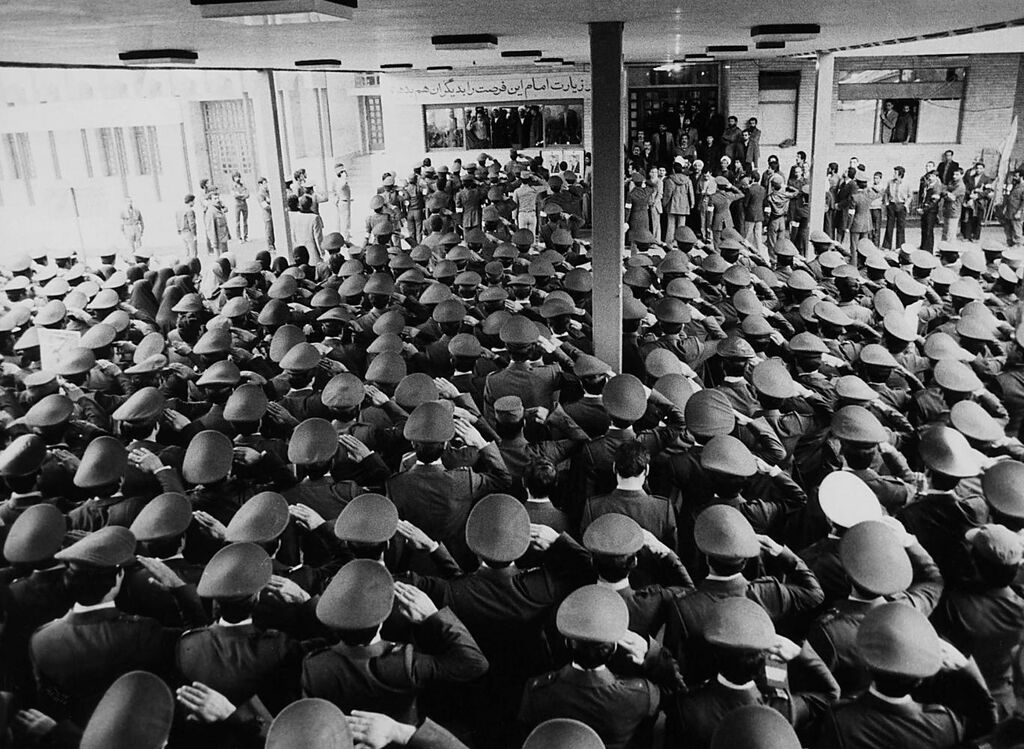
(7)_1_1.jpg)
